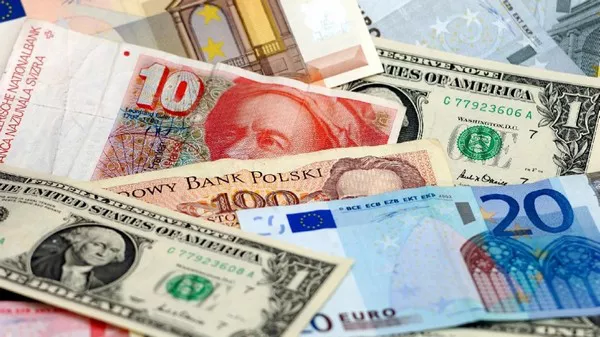In the world of international finance, understanding historical exchange rates is of paramount importance. One of the most widely tracked currency pairs is the Swiss Franc (CHF) to the United States Dollar (USD). Analyzing the historical performance of these currencies can provide valuable insights for investors, businesses, and economists. In this comprehensive guide, we will delve into the CHF to USD historical exchange rates, exploring their significance, factors influencing them, and how to use this data to make informed decisions. Let’s embark on this informative journey!
Why Are CHF to USD Historical Exchange Rates Important?
1. Historical Trends Speak Volumes
Examining historical CHF to USD exchange rates allows us to identify trends and patterns. These insights can be invaluable for traders and investors, helping them anticipate future movements and make well-informed decisions.
Historical data can reveal long-term trends, such as periods of appreciation or depreciation, which can be influenced by economic events, political developments, or central bank policies.
Did you know? Over the past decade, the Swiss Franc has often been viewed as a safe-haven currency, leading to periods of appreciation during times of global economic uncertainty.
2. Risk Management
For businesses engaged in international trade, historical exchange rate data is crucial for risk management. Fluctuations in currency values can significantly impact profit margins and overall financial stability.
By studying past CHF to USD rates, companies can develop strategies to mitigate exchange rate risks, such as hedging or timing their currency conversions strategically.
Pro tip:
Utilize historical data to identify historical volatility levels, helping you assess the potential impact of currency risk on your business.
3. Economic Analysis
Economists and policymakers closely monitor historical exchange rates to gauge the economic health of a nation. A strong CHF, for instance, might indicate a robust Swiss economy, while a weaker CHF may be a sign of economic challenges.
Furthermore, historical rates can help central banks make informed decisions regarding interest rates and monetary policy.
Key insight:
Historical CHF to USD rates can be a leading indicator of broader economic trends and can provide valuable insights into a country’s economic performance.
Factors Influencing CHF to USD Historical Exchange Rates
Understanding the factors that influence the historical CHF to USD exchange rates is crucial for making sense of this complex relationship.
1. Interest Rates
One of the primary drivers of currency value is interest rates set by central banks. Higher interest rates in Switzerland, for example, can attract foreign investors seeking better returns, increasing demand for the Swiss Franc and causing it to appreciate against the USD.
Conversely, lower interest rates in Switzerland can have the opposite effect, causing the CHF to weaken.
2. Economic Indicators
Economic indicators such as GDP growth, inflation, and employment figures play a significant role in currency valuation. Strong economic data in Switzerland can boost confidence in the CHF and lead to its appreciation.
Monitoring these indicators over time can provide insights into the historical performance of the CHF.
3. Political Stability
Political stability and geopolitical events can impact exchange rates. Switzerland’s reputation for political stability has often made the CHF an attractive choice for investors during times of global uncertainty.
Historical data can reveal how political events have influenced the CHF’s value over the years.
4. Market Sentiment
Investor sentiment can be a powerful force in the forex market. Positive sentiment can lead to increased demand for the CHF, while negative sentiment can drive depreciation.
Historical data can help identify periods of extreme sentiment and their impact on the CHF to USD exchange rate.
How to Use CHF to USD Historical Exchange Rates
Now that we’ve explored the significance and factors influencing historical CHF to USD exchange rates, let’s discuss practical ways to use this data:
1. Investment Strategy
Investors can use historical rates to inform their investment strategies. By analyzing past trends, they can identify opportunities to buy or sell CHF or USD.
Historical data can also help set realistic expectations for potential returns and risks.
2. Risk Management
Businesses engaged in international trade can utilize historical data to create risk management strategies. This may involve setting exchange rate targets or using financial instruments like forwards or options to hedge against unfavorable rate movements.
3. Forecasting
Economists and analysts often use historical exchange rate data as inputs for forecasting models. By understanding past trends and their drivers, they can make more accurate predictions about future exchange rate movements.
4. Policy Making
Central banks and governments can benefit from historical data when formulating monetary and fiscal policies. It provides them with insights into how their policies have affected the CHF’s value and can inform future decisions.
In Conclusion
Understanding CHF to USD historical exchange rates is essential for investors, businesses, and economists alike. This comprehensive guide has highlighted the significance of historical data, the factors influencing exchange rates, and practical ways to use this information.
By harnessing the power of historical data, you can make informed decisions in the dynamic world of international finance. Stay vigilant, stay informed, and let historical exchange rates be your guide in the currency markets.
Related Topics:
Understanding the Current CHF to GBP Exchange Rate
The Strength of CHF in 2023: Factors Driving the Swiss Franc
Factors Influencing the Exchange Rate of CHF to Pound

























